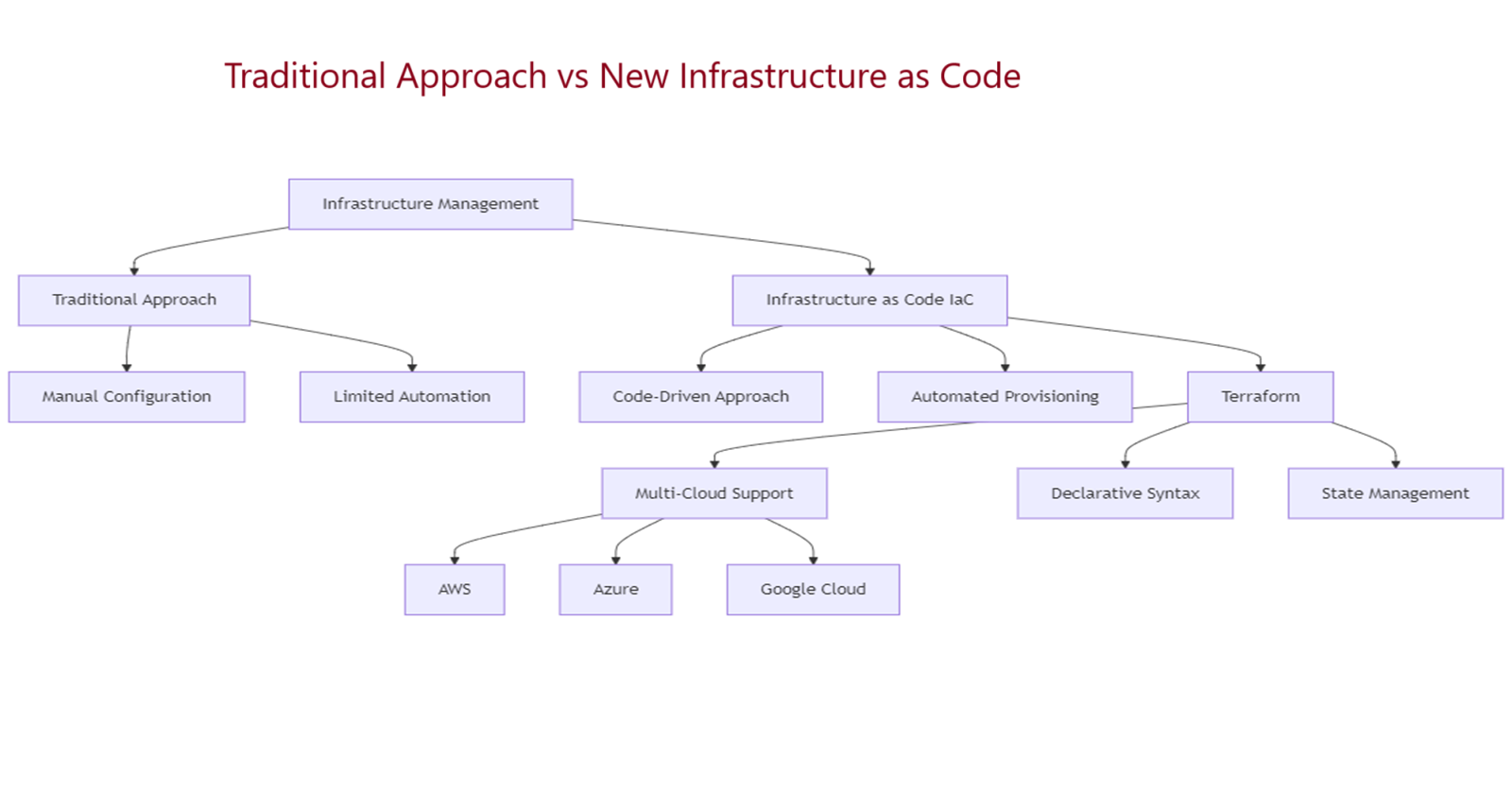🏗️ Infrastructure as Code (IaC): Revolutionizing IT Operations
 Sprasad Pujari
Sprasad Pujari
In today's fast-paced digital world, managing infrastructure efficiently is crucial for businesses to stay competitive. Enter Infrastructure as Code (IaC) – a game-changing approach that's transforming how we handle IT operations. 🚀
The Old Way vs. The New Way
Before IaC, infrastructure management was like navigating a maze blindfolded. Let's take a look at a real-world scenario:
🕰️ The Old Way: Imagine you're tasked with setting up a new e-commerce platform. Here's what it might look like:
• Manually configure 10 servers for web, application, and database tiers • Spend days documenting each step in a Word document • Rely on tribal knowledge for specific configurations • Struggle to replicate the exact setup for testing or disaster recovery
⏳ Result: A week-long process prone to human errors and inconsistencies.
🆕 The IaC Way: Now, let's see how IaC transforms this process:
• Define your entire infrastructure in code (e.g., using Terraform) • Version control your infrastructure alongside your application code • Automate the provisioning process • Replicate environments with a single command
⚡ Result: Infrastructure setup reduced to hours, with consistency across all environments.
Why Terraform? 🛠️
While there are several IaC tools available, Terraform has emerged as a popular choice. Here's why:
🌐 Multi-Cloud Support: Example: You can use the same Terraform code to provision resources on AWS, Azure, and Google Cloud.
# AWS Provider provider "aws" { region = "us-west-2" } # Azure Provider provider "azurerm" { features {} } # Google Cloud Provider provider "google" { project = "my-project-id" region = "us-central1" }🧩 Large Ecosystem: Real-world example: Need to set up a Kubernetes cluster on AWS? There's a module for that!
module "eks" { source = "terraform-aws-modules/eks/aws" version = "~> 19.0" cluster_name = "my-cluster" cluster_version = "1.27" vpc_id = module.vpc.vpc_id subnet_ids = module.vpc.private_subnets # Add more configurations as needed }📝 Declarative Syntax: Instead of writing step-by-step instructions, you declare the desired state:
resource "aws_instance" "web_server" { ami = "ami-0c55b159cbfafe1f0" instance_type = "t2.micro" tags = { Name = "WebServer" } }🔄 State Management: Terraform keeps track of your infrastructure's current state, making updates and rollbacks easier.
👀 Plan and Apply: Before making changes, you can preview them:
$ terraform plan Planned changes: + aws_instance.web_server ami: "ami-0c55b159cbfafe1f0" instance_type: "t2.micro" tags.Name: "WebServer"
By embracing IaC and tools like Terraform, organizations can significantly improve their infrastructure management, leading to faster deployments, reduced errors, and better collaboration between development and operations teams.
Have you implemented IaC in your organization? What challenges did you face, and how did you overcome them? Share your experiences in the comments below! 👇
#InfrastructureAsCode #Terraform #DevOps #CloudComputing #TechInnovation
Subscribe to my newsletter
Read articles from Sprasad Pujari directly inside your inbox. Subscribe to the newsletter, and don't miss out.
Written by

Sprasad Pujari
Sprasad Pujari
Greetings! I'm Sprasad P, a DevOps Engineer with a passion for optimizing development pipelines, automating processes, and enabling teams to deliver software faster and more reliably.